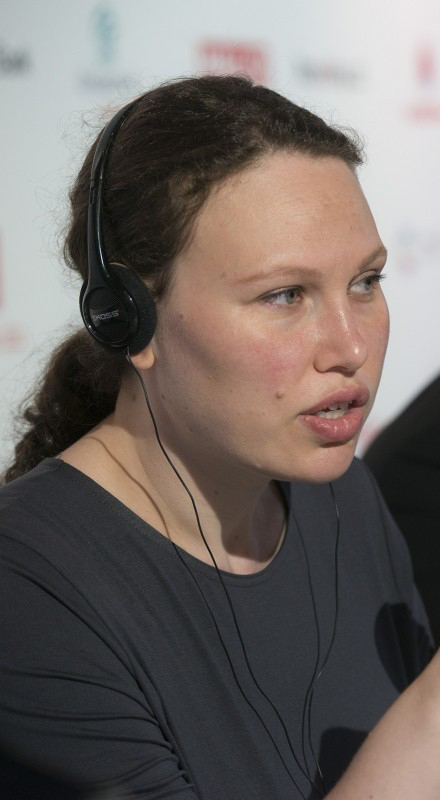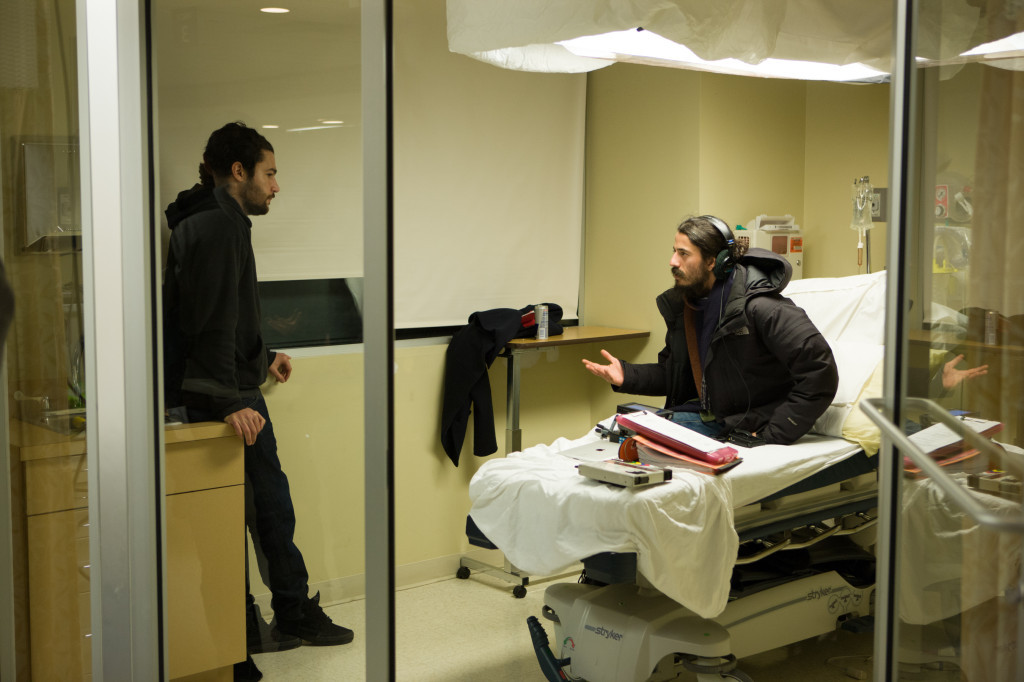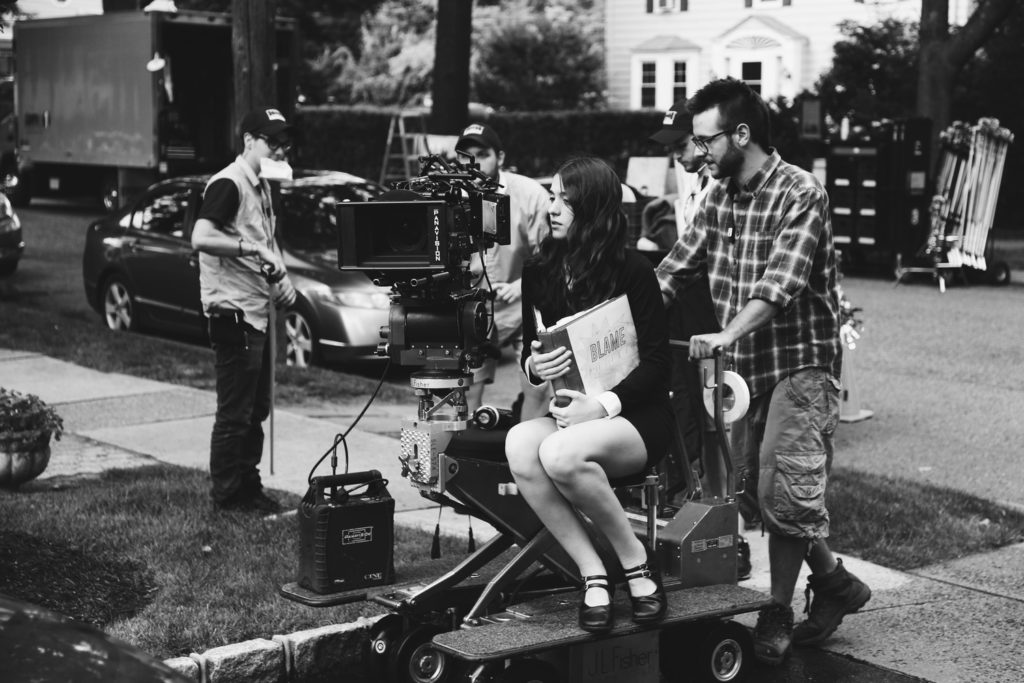The new indie comedy KEEP THE CHANGE is a love story. Like many movie love stories, it features two New Yorkers – in this case, sardonic David and bubbly Sarah – who meet, don’t initially click, but eventually fall in love. A standard rom-com, no? Except for the one thing that the two characters do have in common from the get-go: They are both on the Autism spectrum. And instead of going the usual route by casting neurotypical Hollywood actors to “play Autistic,” Keep the Change‘s writer/director RACHEL ISRAEL cast two nonprofessional performers who actually have Autism.
Israel worked with Brandon Polansky (who plays David) and Samantha Elisofon (who plays Sarah) to develop the story, incorporating their own personalities and real-life experiences into the narrative. The first collaboration birthed a short film in 2013, which Israel has now expanded for her feature debut. In addition to expanding the storyline, Israel expanded her cast of characters, including the casting of industry veterans Jessica Walter (Arrested Development) and Tibor Feldman (The Good Wife) to act opposite her fledgling stars.
The feature adaptation premiered at the 2017 Tribeca Film Festival, where it won the Best U.S. Narrative Award, the Best New Narrative Director Award, and a Nora Ephron Prize Special Mention. Kino Lorber picked up distribution rights and will release Keep the Change in New York on March 16, before expanding to more cities (including San Francisco, Chicago, and Baltimore) on March 23, and Los Angeles on April 20.
We had a chance to talk to writer/director Rachel Israel about adapting her short film, casting both professionals and nonprofessionals, and inclusive filmmaking.
——
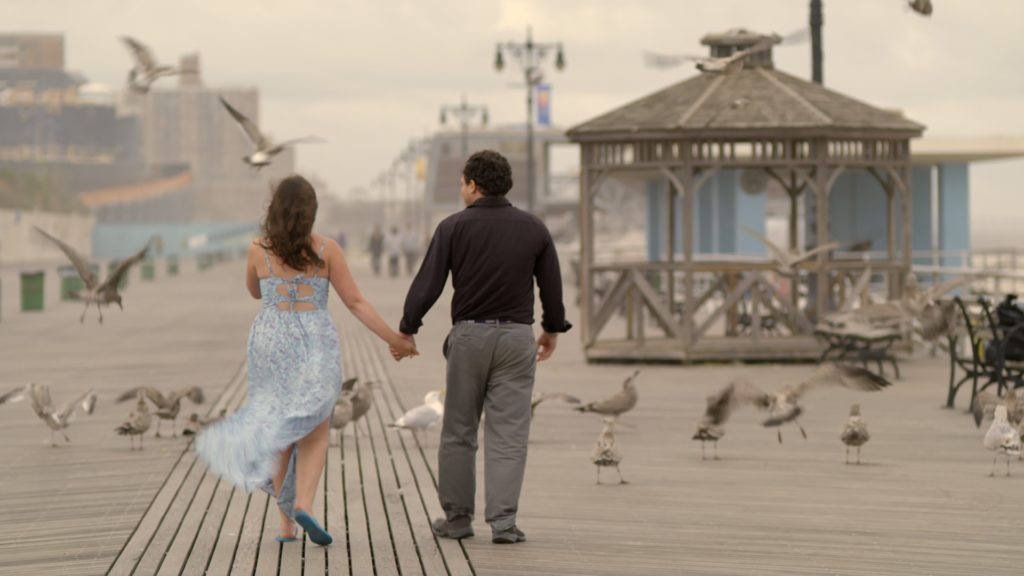
COLIN McCORMACK: The genesis for the film goes back to you meeting Brandon Polansky in an art class and becoming friends. At what point did you become inspired to make a movie based on his life and experiences?
RACHEL ISRAEL: For as long as I have known Brandon, he’s been looking for a girlfriend. And it was about seven or eight years ago when he met his first serious relationship at the JCC’s Adaptations Community, which is called Connections in our film. It was that relationship that really inspired me initially, and I wrote the first draft of the feature very much around that relationship and both the drama that it opened up in his life and also the positive effect that it had on him. I was at that time an MFA student at Columbia and I decided to make my thesis short working with Brandon. And I cast not his real girlfriend, but Samantha Elisofon, who is from that community; they didn’t know each other prior to working together. Once I cast Samantha, it really pushed the whole thing away from being his biography and it became about how would these two characters fall in love. Then when we went back to make the feature, I just kind of embraced that, and the supporting cast I worked with – Will Deaver and Nicky Gottlieb and others – I knew that I wanted them in the film before I knew how they would really work for the story. So we just kind of cast first and then it took two years between the short and feature. Over those two years [we] developed the script, working with them to figure out what their characters would be and how that would work in the story.
CM: The unfortunate “norm” in films about people with disabilities is that usually either able-bodied or neurotypical actors are cast in the roles. When you were first writing that original draft of the feature screenplay, did you know you wanted to have Brandon act in it or was it more based on him with the potential of casting a different actor in the lead?
RI: I always knew that I wanted Brandon to act in it. I did originally think that maybe we’d get a neurotypical actress with a lot of experience to play the love interest. And when I was setting out to make the short film, I did get some advice to that end, being that we had worked so hard on developing the script and it was already kind of a wild card working with Brandon, and let’s try to color in the box. So I auditioned about 100 neurotypical actresses. I also – on advice – auditioned some people to see if they could play Brandon, but that wasn’t going to work. But nothing that we saw with the neurotypical actresses that we brought in felt authentic. It kind of felt manipulative when we looked at it in playback. So I started looking toward people who could bring their own life experience to this. Samantha, who I had met in the community – I don’t know why I hadn’t thought of her before – she was just a luminous person there. We brought her in to audition and she hadn’t had acting experience working in front of the camera, so it was a very rough first audition. But I saw that we could communicate, so we just took it from there. It definitely affected the way I was going to direct the piece, but all positive [ways], I think. For the short film, we had many many drafts of that script. And it ultimately – through the editing, we had tons of footage – it ended up getting back to the shape that the original story had been in, but just with some wonderful detour moments. And the same thing for the feature.
CM: Specifically with the character of Sarah, how did that character change after you cast Samantha?
RI: Oh, it changed a lot. Because I had written this around his real girlfriend, I had to throw that out the window and really make it about how would these two people fall in love, Brandon and Samantha. Or rather, they weren’t playing themselves, but the characters that we built up around who they were. How would those two people fall in love? I think what she had in common with the original character was a sweetness and a curiosity about the world. But then Samantha brought her pride in her sexuality. That’s Samantha. Her being very adventurous, wanting to taste new experiences, that’s Samantha. A lot of the strengths in that character is Samantha.
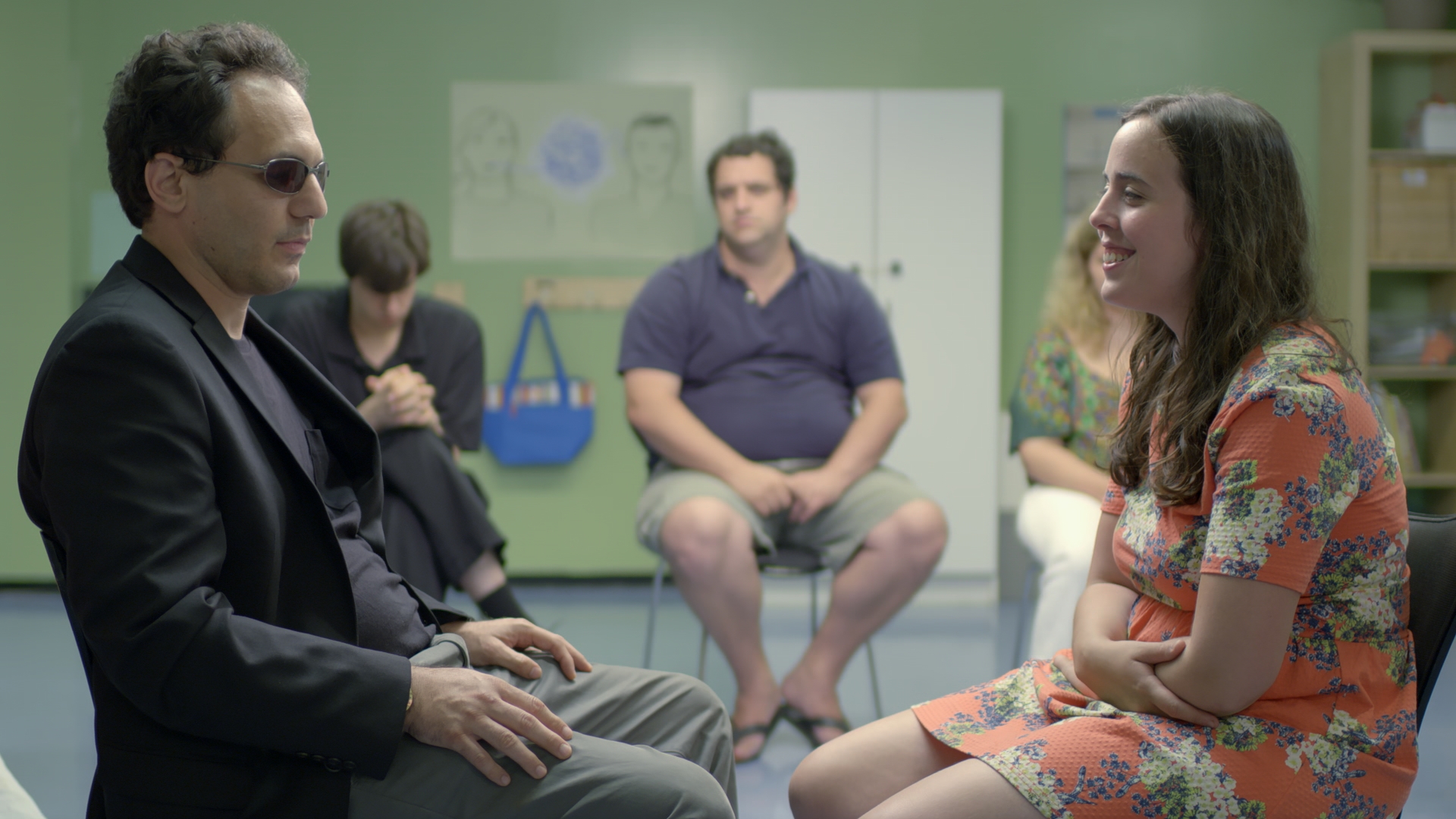
CM: When you were writing the script and working with Brandon and Samantha on their characters, were there any tropes you wanted to avoid that maybe you’ve seen in other films about people with disabilities, or specifically people with Autism?
RI: I guess so, but I don’t think I worried too much about it because I was more focusing on what I wanted to make sure we got in there about these people. As long as we did that, they’re so not the trope that I wasn’t too concerned about avoiding artificial things. I was more focused on, We’ve got to make sure we get this across about Samantha’s character. Or Brandon. I cared very much that we kept in things about the characters [like] their audaciousness; that we’re not making sanitized portrayals of these people; that they were all flawed characters and their flaws didn’t have to do with the disability. We weren’t making saints here. David’s terrible sense of humor was something I really wanted to keep because that to me was part of his coping mechanism for the world, which always ends up getting him in more trouble. And Sarah’s sexuality.
CM: Sex scenes can be awkward for any actor or filmmaker. How did you navigate those waters when filming the scene between Brandon and Samantha?
RI: Yeah, we talked about the scene in advance and did a sort of step-through rehearsal of it. Fully-clothed, but just in terms of who’s going to initiate what and at this point she’ll touch you and at this point you can kiss her. Just so that when they went into it, they knew what to expect and what the boundaries were. Samantha was so excited about filming this scene. She just loves her femininity and really was excited to do this scene. She would always ask, “When are we doing this scene again?” Brandon was appropriately nervous, so I think that played well.
CM: You also did sensitivity training with your entire crew before filming began, which I found really cool and fascinating. What were some of the tips and things you learned or that came out during that session?
RI: We had a really lovely young woman, Becca Lory, come in and talk to the whole crew. She just talked through with them some things, like every person in the cast is different, but some things they should be aware of in terms of respecting personal space. A whole bunch of different things that crews should look out for or should be sensitive to [with] the cast. She also was a very open person and was there to take any questions and make the crew also not feel intimidated by it. So, understanding that people make mistakes and creating an environment where we’re always asking questions and learning as we go along as well.
CM: Do you think this experience – in terms of inclusivity in general – will carry over to your future work?
RI: Yeah, I think that working with this cast definitely affects me as a director in general because it made me – after this whole long process – very much aware of how much you can benefit by stepping back and knowing how much you don’t know about each actor’s personal needs. So if you’re working with very trained, professional actors, even if I screw up as a director and give sloppy directions, they’re probably going to make it okay because they have enough experience to know how to deal with that. Working any time with a first-time professional cast, you can’t take that for granted that they’re going to be able to find their way. And then I guess working with a cast on the spectrum, it’s just amped up a little bit more because everyone has especially different communication styles. That’s something that’s true for any actor, but it’s just at a little higher level when working with people on the spectrum. So I think it’s made me a better director.
Then in terms of inclusivity, I’m really drawn to stories about lesser-known worlds and lesser-known characters. I think I’m drawn to that anyway, but it’s set a very high creative engagement mark for me, making this film.
CM: For the feature, you added some seasoned actors to the cast like Jessica Walter and Tibor Feldman. What was behind the decision to bring them on as opposed to doing the film with a completely nonprofessional or new cast?
RI: For the supporting roles where the people are not on the spectrum, we were looking for excellent actors, and Jessica Walter is an excellent actor, as is Tibor Feldman. They ended up bringing so much to their scenes, were very generous with the other cast, and very quickly understood what we were going for in terms of performance, style, and – whether the cameras were rolling or not – keeping everyone in character. So they did a lot in those scenes to keep them feeling real.
CM: By that point, a lot of your other cast had known each other or worked together on the short. Did you have time for rehearsals with Jessica and Tibor and the actors coming on for the feature version?
RI: With Jessica and Tibor, we did not rehearse in advance of shooting. We would usually do a couple of takes or “rehearsal takes,” [and] I think I usually had the camera rolling even for those. But I don’t think that they really needed that much rehearsal. And even with the cast on the spectrum, I didn’t always rehearse with them in the traditional way. A lot of it would be kind of talking through a scene. Or even with Brandon and Samantha, because we didn’t want to blow it before we were filming, we would work through the scene [like], Let’s try a scene that’s kind of like this, that would have the same sort of emotional angle on it. But we wouldn’t necessarily step through the actual scene because we wanted to save that magic for the camera.
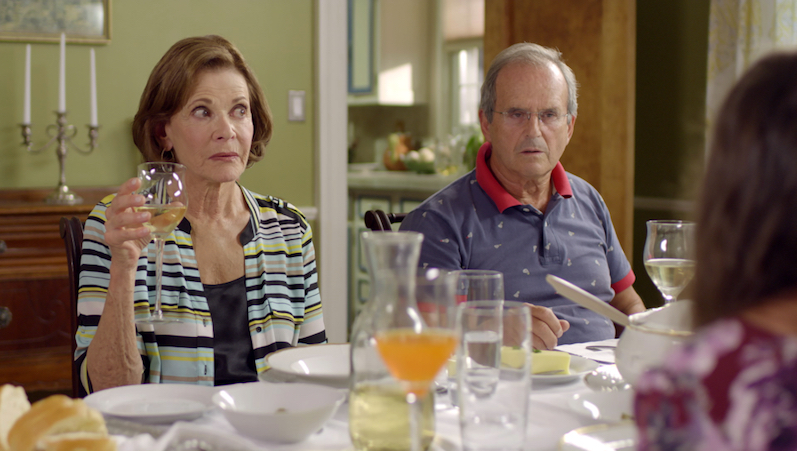
CM: As actors, how did Brandon and Samantha evolve from when you started working with them on the short to when you wrapped with them on the feature?
RI: They evolved a lot. They grew a lot. Particularly I noticed, between working on the short and the feature, Samantha became such a pro. I would be totally confident in her going off now and working on other professional productions. She grew so much. Brandon also – because I worked with him a little bit more intensely one-on-one just in preparation for the short – I don’t see as marked a difference between the short and the feature, but he grew so much in the year of acting exercises that we did before making the short film. [He grew] tremendously.
CM: Do you know if performing is something that Brandon and Samantha plan to stick with? Have you talked to them about that?
RI: Brandon and Samantha definitely want to continue acting. I know that Samantha is pretty active in going out and going to auditions. She’s in a couple of theater groups in New York also. One is called the EPIC Players, which is a neurodiverse theater group, so there are people on the spectrum and people not on the spectrum acting together. It’s really a pretty terrific thing.
CM: You were accepted to the Sundance Editing Intensive. What types of lessons did you take away from that while doing post-production on the film?
RI: That was such a gift being able to participate in that. My editor Alex Camilleri and I, we had already been working for a long time with the material and I think we came at a really good time for us in the project, because we knew the material really well and I think we had gotten to a certain point where we felt like we were almost there, but we still had a long way to go. We thought we knew it really well and were bumping our heads against some walls that really got cracked open within that week. It was only a week, but it was a pretty intense time. We were kind of working around the clock.
CM: Who were some of your mentors during the week?
RI: Lee Percy was our personal editing mentor. There are two projects there during this round of the Editing Intensive, and Lee Percy would work between the two projects.
CM: Your producer Summer Shelton won the Spirit Awards’ Producers Award this year. In your opinion as a director, what’s the key to finding a good producer?
RI: I think – and Summer was really terrific at this – someone who understands the project creatively. I felt really blessed to have Summer on board for the whole of it because she did understand what we were going for creatively. So even whatever the compromises you have to make in this area or that, to have someone with you who is supportive of what you’re trying to do, who you trust as a co-parent of the project, is key. I had that with Summer and also our other producer Kurt Enger, who was on board throughout this whole thing.
CM: Was there a memorable problem or issue that arose that you and your producers were able to navigate your way out of?
RI: You know, on-set it was pretty smooth. It was such a small budget. Kurt was running the day-to-day of the on-set and he just did a tremendous job on a small budget of pulling together a team that made me feel like I was on a larger budget film. I never had to worry as a director over anything, I felt very protected and I especially credit Kurt with creating that environment on set. And then I think the biggest struggle that I was certainly aware of was in the fundraising. That – like with a lot of small films – kind of came together like a snowball, so one thing fell into place and then another. That was probably the hardest part of it for me as a director because I had the whole cast attached for so long. So it wasn’t just me that was holding onto this, but I needed to keep them attached and excited and believing in it without feeling like I was leading them on should the thing not come together. So it kind of had to come together. It was us holding our breath for a long time until it did.
CM: Did you have the support of the community at large, but also specifically the community at the JCC, from when you started? In terms of filming at their location – and I think some of their staff appear in the film – were they pretty much on board from the jump?
RI: Yeah, they were. And it’s hard to imagine how we could have made the film without that support and access. I came to them when I was just trying to make the short film and they really welcomed me in and I started volunteering there. It didn’t require much more of me than coming to events and helping out a bit, being a part of the social mix and getting to know people, which is exactly what I wanted. Then when it came to making the feature, they opened the doors and let us film there. And both in the short and the feature we had staff that acted in the film. That brought so much because it would really be hard to get an actor to step into those roles and lead classes with the other cast and really bring out those performances. It would be hard to have an actor step in. So the cast felt safe in those situations with the real staff members.
CM: Did it help to have a smaller crew in that way as well? Not only budgetary, you sometimes need a smaller crew, but just in those group scenes to make all the cast feel comfortable and safe?
RI: Yeah, and even though it was small, we still did everything that we could to kind of lessen or quiet our presence during those scenes. So little things like not yelling, “Action!” Not yelling, “Cut!” Just saying quietly, “Okay, we’re going to start,” and “Okay, that’s good, let’s stop now.” Those little things helped a lot.
CM: How has it been doing the festival and promotional circuit with some of your actors?
RI: It’s been so fun. Tribeca was a phenomenal premiere experience. This being a New York film, most of the cast could come out for those screenings and the Q&A’s. That was really great to have everyone here for that. We had our international premiere at the Karlovy Vary Film Festival in the Czech Republic. Both Brandon and Samantha came for that and that was a super glamorous, luxurious experience. We also went to San Francisco. The film’s been around a lot internationally, and I just haven’t been able to go to all of those festivals. But it’s nice to see that it’s [been] received internationally.
CM: I saw that advertisements for the film have run on subway billboard ads around New York and on city bus stops?
RI: Yeah, as part of the Made In NYC program. That’s like the most thrilling part of it all to me somehow, being in the metro system [laughs].
CM: I was going to say, low-budget films don’t always get ad buys like that. That’s part of the New York City Film Office program?
RI: Yeah, through the generosity of the New York Film Office.
CM: What’s next for you? Do you have your next project lined up?
RI: I’ve been developing a couple of scripts. One is a female road trip comedy and another is a modernization of a Jane Austen novel, Persuasion. Those are still in the early stages. More at the forefront is that I’m developing Keep the Change as a TV series. It’s in the same world, same cast, but with an expanded canvas that would allow us to really get in-depth with these other characters.
__
Thanks again to Rachel for talking with us about KEEP THE CHANGE. Learn more about the film at Kino Lorber’s website, and on Facebook and Twitter.
This interview has been edited for clarity.
If you’re an independent filmmaker or know of an independent film-related topic we should write about, email blogadmin@sagindie.org for consideration.

